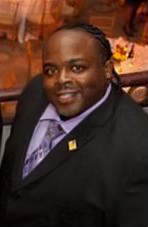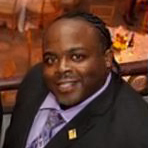 If you stood at the front door of our Beacon afterschool program at Queens Community House in New York City, you’d see a small army of children, busy with any of a variety of horizon-expanding activities. We’re proud of how many kids we reach with our program, and even prouder of the impact we know it has on their lives and the lives of their families. But here’s a sobering statistic: In New York state, for every child in an afterschool program, there are nearly two more who aren’t in a program whose parents say they’d sign them up if a program were available to them.
If you stood at the front door of our Beacon afterschool program at Queens Community House in New York City, you’d see a small army of children, busy with any of a variety of horizon-expanding activities. We’re proud of how many kids we reach with our program, and even prouder of the impact we know it has on their lives and the lives of their families. But here’s a sobering statistic: In New York state, for every child in an afterschool program, there are nearly two more who aren’t in a program whose parents say they’d sign them up if a program were available to them.
About 632,000 children are in afterschool in the state — 21 percent of all kids, according to Afterschool Alliance’s “America After 3PM” study. That reflects important growth since 10 years ago, when just 15 percent of kids in the state were in afterschool programs.
But another 584,000 kids are unsupervised in the afternoons. In all, there are more than 1.15 million New York state kids not in programs now who would be, according to their parents, if a program were available. In short, we’ve made progress in the last decade but we’ve got a lot more work to do.
New York state isn’t exceptional in that respect; if anything, we’re doing a little better than average. Nationally, 18 percent of the nation’s schoolchildren are in afterschool, up from 11 percent 10 years ago. And, as in New York, the unmet demand for afterschool is even bigger. According to Afterschool Alliance data, the parents of 19.4 million children would enroll their children in afterschool if a program were available to them.
The clear message from all these numbers is that we need more afterschool programs so that more kids can participate. The barrier, of course, is that programs cost money. Even though it’s common for parents to pay fees for their kids to participate, and even though most programs work hard to generate support from local businesses and charities, it’s not always enough to cover the costs of getting programs started and keeping them running with skilled staff.
That’s where federal, state and local governments come in, or ought to, according to the great majority of parents. Fully 84 percent of parents say they favor public funding for afterschool programs, support that’s broad-based and bipartisan, according to the research. But that support hasn’t translated into actual dollars, or at least not enough of them.
So how can we close the gap between public support and public dollars for afterschool? In a word, advocacy. Nowhere is the saying about squeaky wheels getting the grease more apt than politics. And while afterschool programs don’t have millions in campaign contributions to dole out, they have something even better: millions of parents, students and educators with stories to tell. These stories serve as powerful anecdotes and sources for positive change. Also, parents and educators have the opportunity to vote. Aligning our voices through advocacy and the power of voting can bring about results.
In New York City, the afterschool community has learned the value of effective advocacy. Throughout the administration of Mayor Michael Bloomberg, he and the city council had annual fights over funding for a variety of things, including afterschool. During his last several years, he proposed budgets that cut afterschool funding, and the city council came to the very brink of adopting those cuts. But advocates for afterschool managed to fight them off, over and over.
We did it by making noise — rallies, testimony, speeches, interviews. We wrote blog posts, we sent tweets and texts, we made phone calls. We used every tool we could think of to sing the praises of afterschool, and learned a few along the way. In the end, we managed to persuade the mayor and council to preserve afterschool funding.
And this year, partly because we made such an impression in our advocacy efforts through Campaign for Children, our new mayor, Bill de Blasio, has devoted funds to expanding afterschool programming for middle schoolers. The mayor’s administration has recognized afterschool programs as a significant need for the children and families of our city.
In my own case, it was great to have received training and support for advocacy from the Afterschool Alliance as one of their ambassadors. My participation was possible because of support to the Afterschool Alliance from the Robert Bowne Foundation. What I learned from that advocacy training I’ll carry with me and share with others, and I hope to continue using it to empower others in the afterschool community, and most important, the students who participate in afterschool.
Getting involved in advocacy is how we can continue to make a difference in New York City, and how supporters can make a difference across the land. If you are striving to learn more about how you can advocate for afterschool programs log onto www.afterschoolalliance.org, www.nysan.org and www.campaignforchildrennyc.com.
Patrick Pinchinat is the Beacon director at the Queens Community House and afterschool ambassador emeritus in New York City.






























